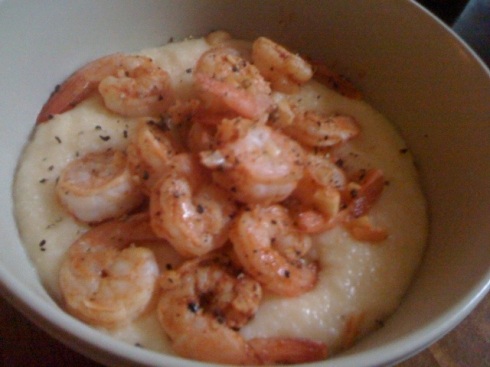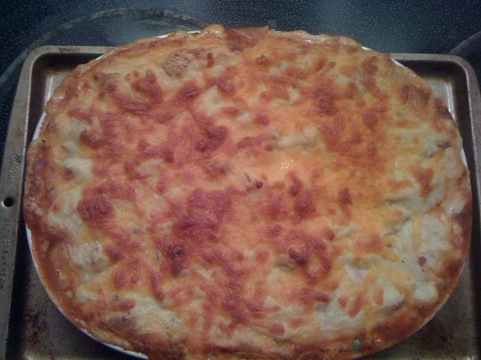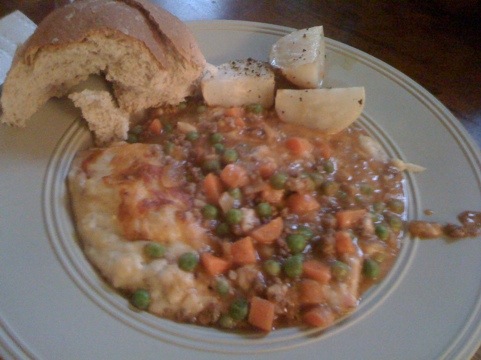January 2nd was big shopping day at our house, and I do mean BIG shopping day. The contents of the refrigerator were reduced to a quarter of a half gallon of milk, two pounds of butter (left over from Christmas baking), condiments, and a few sad and lonely onions floating around in the crisper. The freezer and cupboards were nearly as empty, except for the baking cupboard full of sugar and flour not used in the holiday cookie tray. So it seemed as good a time as any to start tallying up our food expenditures for the year.
If you’ve been following this blog, you know that last year marked our first foray into a CSA, receiving a disbursement of farm-fresh veggies every other week during the summer. This year we plan to purchase a whole share from a different farm, meaning from late spring to mid-fall we’ll receive a weekly goodie box. However, being that Old Man Winter has settled into Pennsylvania for the next several months, I will be doing all of our food shopping at the grocers.
We are fortunate enough to live in a good-sized city with a plethora of grocery options — there are myriad specialty stores in addition to several big chain markets and the Super versions of one-stop big-box stores where you can throw your oranges and new underwear in the same cart. However, I tend to stick with my two favorites: Giant Eagle (Pittsburgh chain equivalent to Piggly Wiggly, FoodChopper, or Kroger) and Trader Joe’s. Every month I go to both — that is tip #1: Do your research, in both competitive pricing and nutritional content of the product.
You don’t need to be a nutritionist or an economist to figure this out, and it doesn’t require use of a calculator. I keep it simple with basic guidelines that can be answered with only a quick scan of the label:
- Fewer ingredients are better than more
- No preservatives is better than preservatives
- Few or no unpronounceable words are in the ingredient list
- Product is as minimally processed as possible
- Product has nutritional content other than fat, carbs, sugar and fiber
- Product is best nutritional value at best price per ounce/pound
I split my grocery shopping between two stores because some things are cheaper at one versus the other. Some things there is a large difference, some things the savings are only a few pennies. If the latter is the case, I estimate the savings gained with my perks card before I decide which place to purchase the item. Tip #2: Always, always, always participate in in-store card savings programs. Giant Eagle’s Advantage Card program allows shoppers to earn 1% off groceries for every 10 gallons of gas purchased at the chain’s Get Go gas stations, and in reverse awards $0.10 off per gallon for each $50 spent in the store. Thanks to this program, our gas expenditure for the last eight weeks earned us 11% off our total grocery bill, which then earned us $0.50 off per gallon on our next tank of gas.
Another great feature with Giant Eagle’s Advantage Card is the ability to virtually load coupons with an account on the store’s website. Tip #3: Clip coupons, but only for items on your list — which then rolls right into tip #4: Make a list and stick to it. I plan meals for an eight week period with each shopping trip, including three meals per day per person plus snacks that can be quickly grabbed on the go (we always brown bag lunch and rarely stop for fast food on the fly). It only takes 30 minutes to flip through some cookbooks and compile a list of recipes and their ingredients. I usually do this with that week’s store flier close at hand, which brings us to Tip #5: Plan meals using ingredients that are in-season, on sale, and flexible. For example, if you are going to spend the money on a bundle of fresh thyme but the recipe you want it for only calls for a small amount, load your list with other recipes using the remainder of the ingredient. If you don’t want to spend a week eating thyme-heavy dinners, choose a recipe that can be frozen and reheated later in the month. Throwing away food is throwing away money.
So, back to our family’s grocery shopping. I work 42-48 hours each week, with multiple 12-hour shifts, and I’m starting back to school full-time as well. Steven is a full-time student in a program requiring rigorous study, and also works part-time (and is less than a whiz in the kitchen unless it involves pancakes and bacon). Since we’re both a bit pressed for time I shopped for two months instead of one, with an eye toward fast meals that can self-maintain in a crockpot or be thrown together hastily — while still steering clear of preprepared/prepackaged dinners, which are ridiculously overpriced and always full of salt and preservatives. Cost breakdown is:
- Giant Eagle $206.20 after saving $32 even between Advantage Card discount, in-store specials and coupons. Items included: 5 large cans diced tomatoes, 8 pounds of hormone and antibiotic-free skinless/boneless chicken breast, 3 pounds skinless/boneless chicken thighs, one pound local organic stew lamb, 4 semi-boneless strip steaks, one pound thinly sliced sandwich steak, 2 pounds shrimp, thick-cut peppered bacon, 2 pounds hot sausage, 7 pound whole fryer chicken, 2 ham steaks, one dozen organic/cage-free eggs, 4 pounds shredded cheese, 5 pounds red potatoes, parsnips, carrots, celery, onions, half-gallon milk, 5 6oz cartons of Greek yogurt, 5 packages assorted frozen vegetables, 3 bags dried beans, grits, jar of pickled beets, ranch dressing, jarred spices, etc.
- Trader Joe’s $155.19 with no savings (Trader Joe’s sells everything at lowest possible prices). Items included: 4 pounds 80/20 ground beef, 3 pounds ground turkey, 2 pounds mahi mahi, 2 tuna steaks, 2 pounds individually frozen chicken breasts, extra-firm tofu, 2 boxes of cereal, 4 pounds frozen veggies, 3 boxes fruit cereal bars, 2 packages dried fruit, couscous, whole wheat pasta, brown rice, 2 cheese wedges (Jarlsburg and espresso Toscano), crackers, 2 boxes frozen blueberry waffles, 2 pounds organic chicken sausages, bananas, fresh broccoli, broccoli slaw mix, one bag mixed green salad, one bag baby spinach, 2 packages lobster ravioli, 2 bags frozen cioppino, panko bread crumbs, 3 bags chips/snack foods, one package organic popcorn kernels, large container grated parmesan, 2 six packs of 4 oz yogurt cups, heavy cream, coffee creamer, guacamole kit, locally made bread, peanut butter, 3 pounds sweet potatoes, five cans albacore tuna packed in water, etc.
Luckily everything fit into our apartment sized freezer, though it took our combined Tetris skills to make it happen. In the end, our total for eight weeks of breakfasts, lunches and dinners, came to $361.39. That is $22.59 per week per person at three meals a day, which breaks down to approximately $1.09 per meal per person. Can you even buy a McDonald’s sandwich for $1.09 these days?
Tags: cost, groceries, tips for saving on groceries



